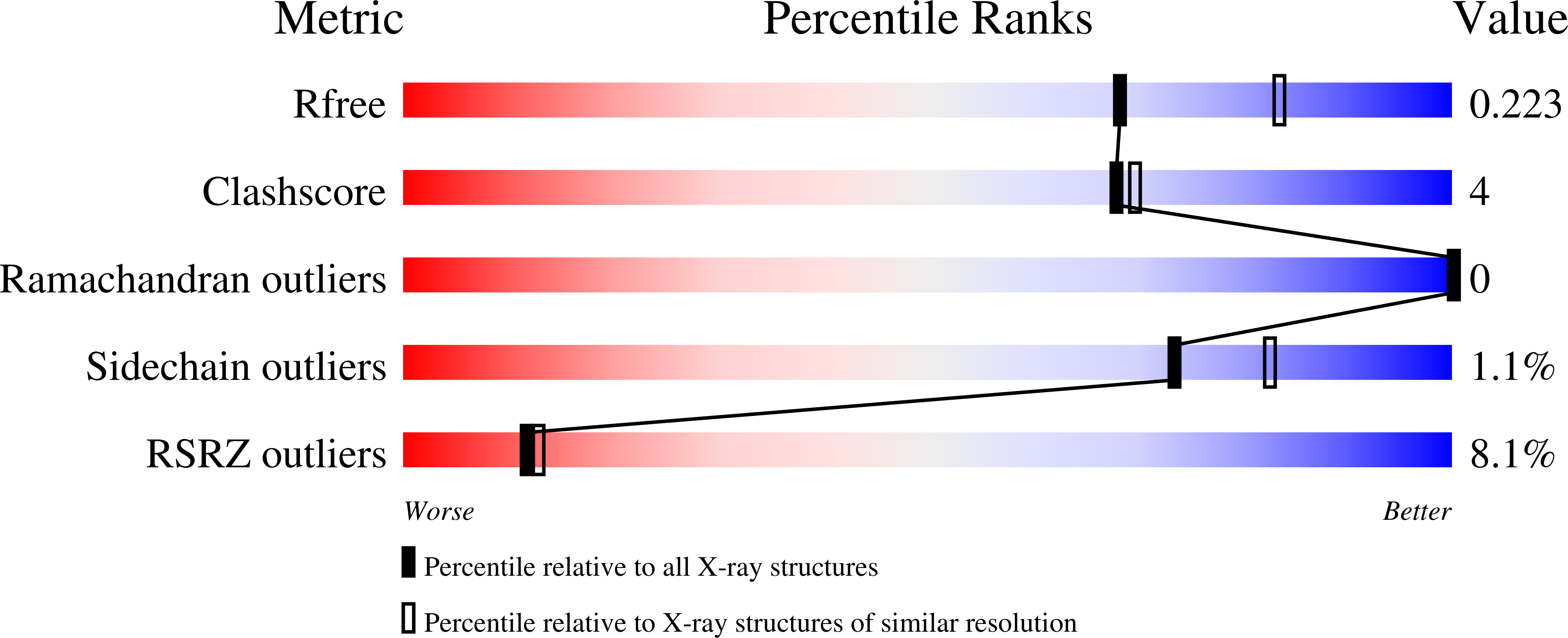Histone recognition and large-scale structural analysis of the human bromodomain family.
Filippakopoulos, P., Picaud, S., Mangos, M., Keates, T., Lambert, J.P., Barsyte-Lovejoy, D., Felletar, I., Volkmer, R., Muller, S., Pawson, T., Gingras, A.C., Arrowsmith, C.H., Knapp, S.(2012) Cell 149: 214-231
- PubMed: 22464331
- DOI: https://doi.org/10.1016/j.cell.2012.02.013
- Primary Citation of Related Structures:
2NXB, 2OO1, 2OSS, 2OUO, 2RFJ, 3D7C, 3DAI, 3DWY, 3GG3, 3HME, 3HMF, 3HMH, 3I3J, 3IU5, 3IU6, 3LXJ, 3MB3, 3MB4, 3MQM, 3NXB, 3P1C, 3P1D, 3Q2E, 3RCW, 3TLP, 3UV2, 3UV4, 3UV5, 3UVD, 3UVW, 3UVX, 3UVY, 3UW9 - PubMed Abstract:
Bromodomains (BRDs) are protein interaction modules that specifically recognize ε-N-lysine acetylation motifs, a key event in the reading process of epigenetic marks. The 61 BRDs in the human genome cluster into eight families based on structure/sequence similarity. Here, we present 29 high-resolution crystal structures, covering all BRD families. Comprehensive crossfamily structural analysis identifies conserved and family-specific structural features that are necessary for specific acetylation-dependent substrate recognition. Screening of more than 30 representative BRDs against systematic histone-peptide arrays identifies new BRD substrates and reveals a strong influence of flanking posttranslational modifications, such as acetylation and phosphorylation, suggesting that BRDs recognize combinations of marks rather than singly acetylated sequences. We further uncovered a structural mechanism for the simultaneous binding and recognition of diverse diacetyl-containing peptides by BRD4. These data provide a foundation for structure-based drug design of specific inhibitors for this emerging target family.
Organizational Affiliation:
Nuffield Department of Clinical Medicine, Structural Genomics Consortium, University of Oxford, Old Road Campus Research Building, Roosevelt Drive, Oxford OX3 7LD, UK. panagis.filippakopoulos@sgc.ox.ac.uk















